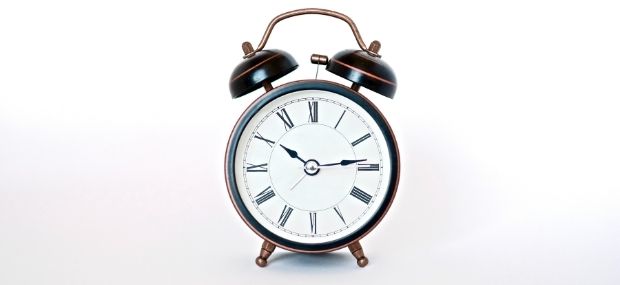Australian Time Zones Explained: How Many Are There?

Are you intrigued to know what the time zone of Australia is? Do you want to know how many time zones there are in Australia? Whatever your reason, knowing a country's time zone before you migrate is compulsory.
If the answers to these questions are yes, you have made it to the correct article. It is a complete guide about Australia's time zones and how to convert them.
So, stick around until the end to learn more about Australia's time zones!
Before we delve directly into the subject, let us quickly understand the concept of time zones and why they exist.
1. What Are Time Zones?
According to Wikipedia, a time zone is "an area that observes a uniform standard time for legal, commercial and social purposes." Certain areas are in higher latitudes, and they use daylight saving time. They add an hour to the local time in two seasons, spring and summer, for just a part of the year.
Now that we know what time zones are, let us dive directly into the time zones of Australia.
2. How Many Time Zones Are There In Australia?
Australia has a total land mass of about 7.7 million square centimetres and is the world's sixth-largest country.
There are three separate time zones. Let us have a glance through each of them:
Australian Eastern Standard Time (AEST)
The Australian eastern standard time, or AEST, covers the states and territories of Queensland, New South Wales (except Brooklyn Hill), Victoria, Tasmania, and the Australian capital Territory. The cities that AEST covers are Brisbane, Sydney, Melbourne, Hobart, and Canberra.
Per the Coordinated Universal Time or UTC, you can calculate the AEST by adding ten hours to the UTC (UTC +10:00) time.
Australian Central Standard Time (ACST)
The Australian Central Standard Time or ACST covers the states and territories of South Australia, the Northern Territory, and the town of Broken Hill in western New South Wales. The cities that ACST covers are Adelaide, Darwin, and Broken Hill. Unlike AEST, the calculation of ACST differs by subtracting thirty minutes.
Thus, ACST equals the Coordinated Universal Time plus nine hours and thirty minutes (UTC +9:30).
Australian Western Standard Time (AWST)
The Australian Western Standard Time, or AWST, covers only the state of Western Australia and the city of Perth. If AWST is compared with AEST again, the time will fall back by two hours! So, AWST will be equivalent to the Coordinated Universal Time added with eight hours (UTC +8:00).
Some other additional time zones of Australia that you should also know about are:
Norfolk Island Standard Time (NFT)
The NFT, or Norfolk Island Standard Time, covers Norfolk Island's territory and Kingston's city.
You can calculate this time zone by adding eleven hours (UTC +11:00) to the Coordinated Universal Time (UTC).
Christmas Island Standard Time (CXT)
The Christmas Island Standard Time (CXT) covers just the territory of Christmas Island.
You can calculate this time zone by adding seven hours (UTC +7:00) to the Coordinated Universal Time (UTC).
Cocos (Keeling) Islands Standard Time (CCT)
The Cocos (Keeling) Islands Standard Time (CCT) covers only the territory of Cocos (Keeling) Island.
You can calculate this time zone by adding six hours and thirty minutes (UTC +6:30) to the Coordinated Universal Time (UTC).
There is one more time zone called daylight saving time or DST.
It is the practice to advance the clock by an hour when the warmer months of the year kick in.
The locations that practice where daylight saving time (DST) are:
-
New South Wales
-
Victoria
-
South Australia
-
Tasmania
-
The Australian Capital Territory
-
Norfolk Island
The places in Australia without daylight saving:
-
Queensland
-
The Northern Territory
-
Western Australia
-
Christmas Island
-
The Cocos (Keeling) Islands
Daylight Saving Time starts on the first Sunday of October at precisely 2 am. After the clock strikes 2 am, you advance the time by an hour. Daylight Saving Time ends at 2 am, which is 3 am per Daylight Saving Time, on the very first Sunday of April. The time is again moved back by an hour.
Other than the general time zones, there is also a time zone called the Australian Central Western Standard Time (ACWST). The local time of this time zone differs by 45 minutes of the whole hour.
The western time is UTC +8:00, and the central time is UTC +9:30, and thus ACWST will have a time zone of UTC +8:45.
4. Conclusion
Now that you know everything, you must be confident about the different time zones of Australia and how you can calculate them.
So if you must migrate to any part of Australia, you know now what time you can expect in which part of the country!
Useful Links to Explore:
- English Language Requirements for Australia
- Cultural differences you may experience in Australia
- How to find Part-Time work as a Student in Australia
- Seven Tips for Students on a Budget in Australia
- How to get a Scholarship to Study in Australia
- Driving in Australia as an International Student
- How to change your Course or Institute in Australia
- The Benefits of a Professional Year Program (PYP)
- A Complete Guide to Study in Australia
- Types of Education in Australia
- What to Study in Australia?
How useful was this post?
Click on a star to rate it!



